The Aspendos Theater is the best preserved roman theater of the ancient world. Inscriptions on the southern main entrance show the theater was constructed during the region of Emperor Marcus Aurelius (161-180 A.D.). Its architect was Zenon, a local Aspendian; its construction was funded and presented to the city by two brothers, Crispinus and Auspicatus Curtius who dedicated it to the imperial family and city gods. The dedication inscription can still be seen outside the main entrance, but today it is only partially readable.
In antiquity, central part of Antalya was known as “Pamphylia”, the land of all tribes, and is thought to have been settled originally by migrating people from Anatolia. Pamphylia grew into a populous region and many fine cities were established. None was more impressive, however, than the city of Aspendos. Aspendos was divided into two areas; upper and lower. The lower city provided access for busy river traffic, and contained mainly the shipping and commercial areas and probably the residential districts. Today, little remains of the lower city. The upper city, or the Acropolis, spread over a flat topped hill, rising about 60 meters above the right bank of the Koprucay River (the ancient river Eurymedon) and 20 hectares in extent. It was partly surrounded by city walls and along the walls three monumental city gates were built. This Acropolis area holds most of the monumental buildings and public areas which can be seen today. Like neighboring Perge to the west, Aspendos was engulfed in many historical battles and changes of sovereignty, including Alexander the Great in 333 B.C. Aspendos was even part of the Pergamon Kingdom until 133 B.C. like most other Pamphylian cities, Aspendos reached its golden age during the second and third centuries, A.D., when most of its monumental buildings, the basilica, the fountains and the aqueducts were built. After the fall of the Roman Empire, the city experienced a massive earth quake and suffered attacks from marauding pirates disease and famine. And eventually fell into decline after 7th century.
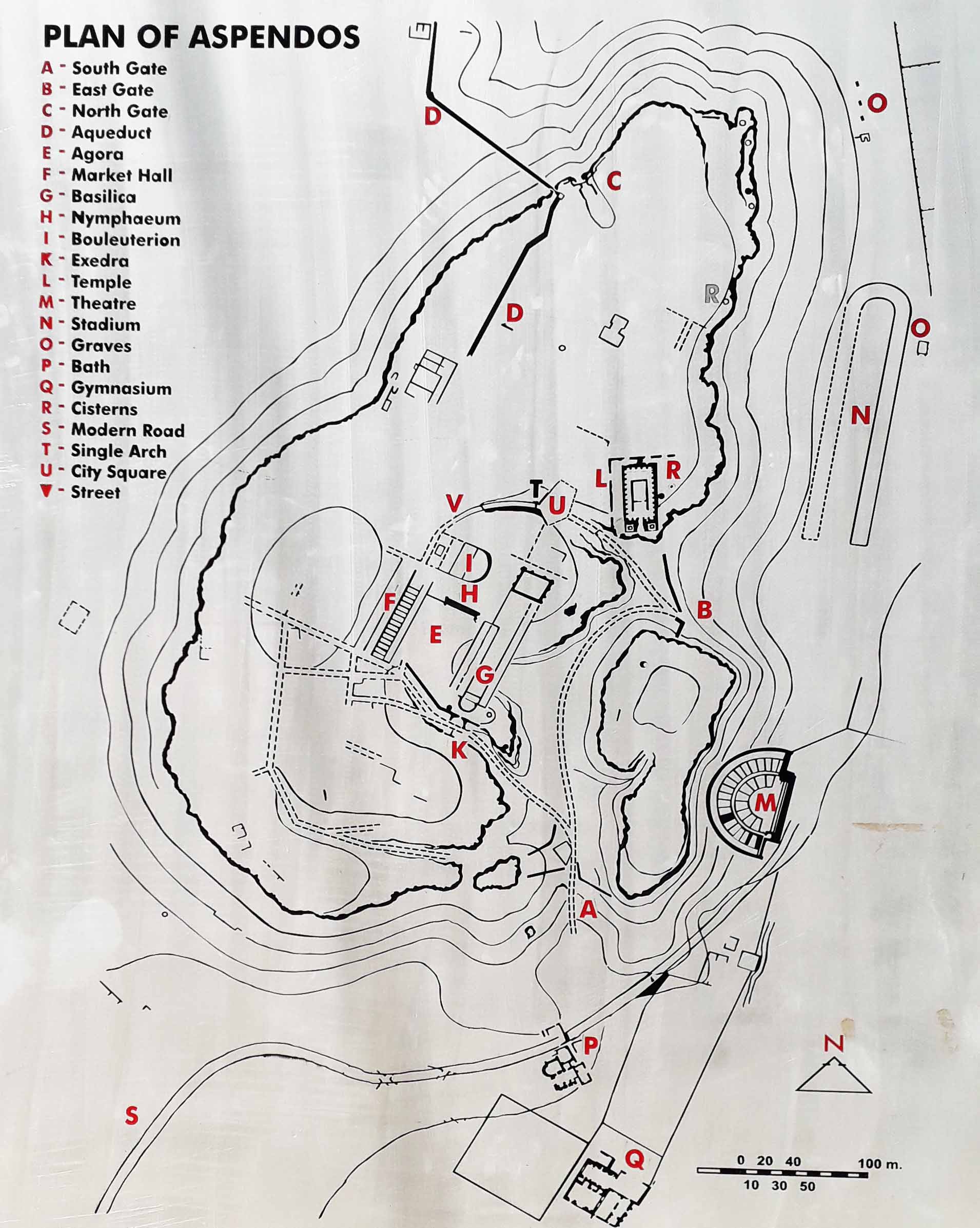
Owing to the Eurymedon River, a navigable waterway in ancient times, Aspendos grew into an important commercial center in Pamphylia. It is thought nearly 20,000 people lived and worked in Aspendos. Fertile agricultural plains, olive groves, vineyards and salt beds, as well as grain exports and horse-breeding all played a major role in making Aspendos one of Pamphylia’s wealthiest cities. Major exports included hand-woven rugs, weavings and textiles, furniture made from lemon tree wood and highly regarded wines. Perhaps the most famous export of all was Aspendian horses. So legendary were Aspendian horses, that Alexander the Great levied a tax on the city payable in 4,000 horses yearly. Testifying to the wealth and importance of Aspendos, its coins were minted with the city’s original Anatolian name, “Estfediiys” and two naked wrestlers, the city’s symbol. The silver coins were highly valued throughout the Mediterranean region.
Before the aqueduct was built the city’s water needs were met either from the wells in the plains or from the pear-shaped cisterns on the acropolis to bring water to the city by means of a water way carried on arches and two pressure towers under the ordinary atmospheric pressure was one of the most common and important aspects of roman architecture.
The Aspendos Theater is the best preserved roman theater of the ancient world. Inscriptions on the southern main entrance show the theater was constructed during the region of Emperor Marcus Aurelius (161-180 A.D.). Its architect was Zenon, a local Aspendian; its construction was funded and presented to the city by two brothers, Crispinus and Auspicatus Curtius who dedicated it to the imperial family and city gods. The dedication inscription can still be seen outside the main entrance, but today it is only partially readable.
During the thirteenth century, the Seljuk sultan, Alaeddin Keykubat I, thoroughly restored the theater, embellished it with elegant cobalt blue Seljuk tile work, and used it for a summer residence. This magnificent theater’s acoustics were famous from the day it was presented to the present day. The theater is still lit use today, seating thousands of people, and hosting major events such as operas, concerts and folklore festivals.
Source: Info Board
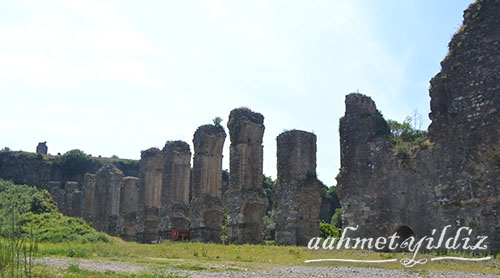
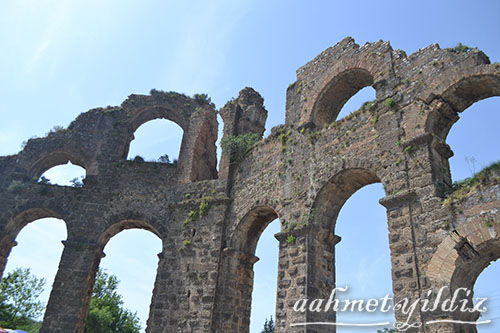
The Theatre of Aspendos
Theatre of Aspendos is the best preserved ancient theatre in Asia Minor and the most Magnificent Roman building of the province of Pamphylia as well. İt was designed by the archıtect Zeno, son of Theodorus. This theater by Zeno shows the final culmination of the practical as well as representative ideas of Roman theatre architecture.
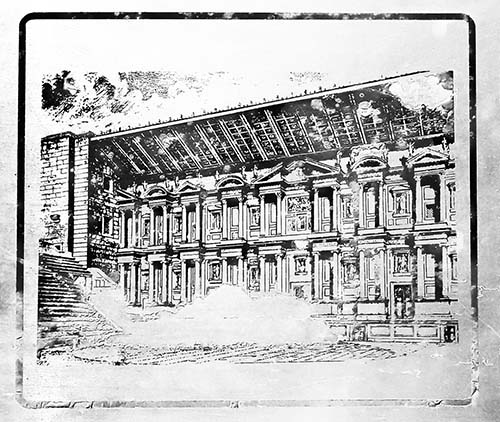
Two-storied scaenae frons is the most impressive part of the theatre. It was covered by marble and luxuriously decorated with forty free- standing columns and niches for statues at the back.
The capacity of the theatre ıs about 15 thousands people. Scene building was repair by by the Seljuk’s (13 th cent.) and used as a cervansarai with some small additions.
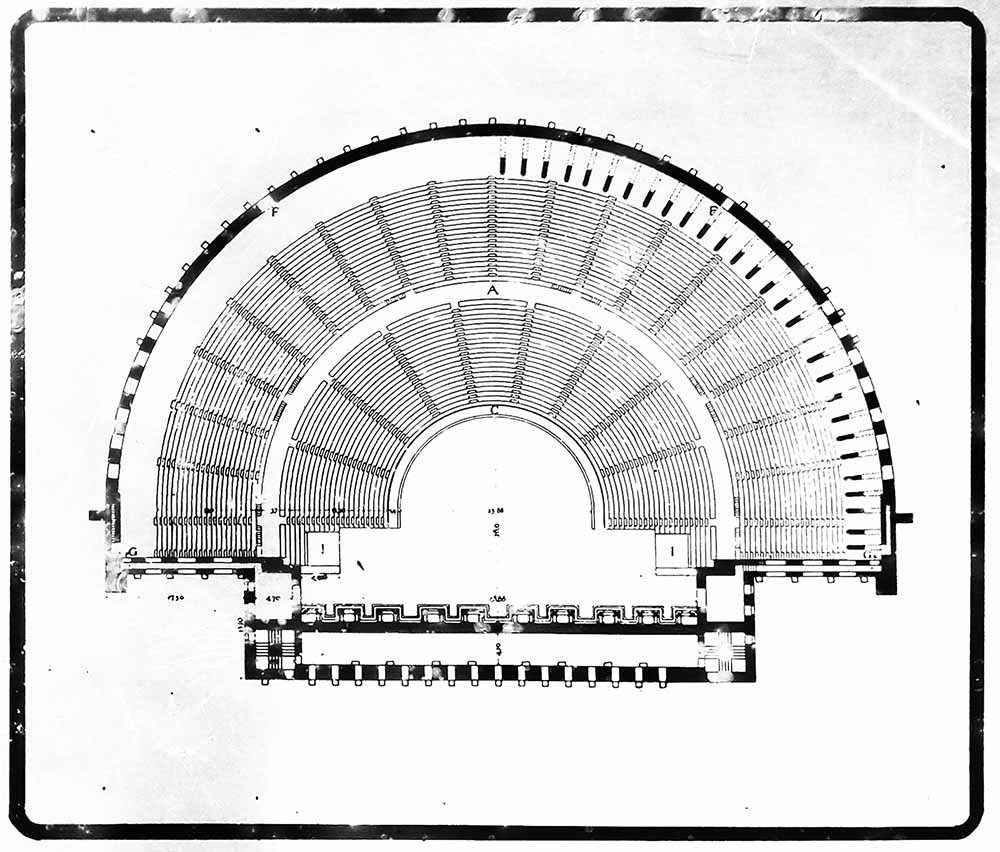
It was built in the time of emperor Marcus Aurelius (161-180 A.D.) by the two brothers “Curtius Crispinus and Curtius Auspicatus as a gift to the city and dedication to the gods of the country and to the imperial house.
Source: Info board in the Theatre of Aspendos
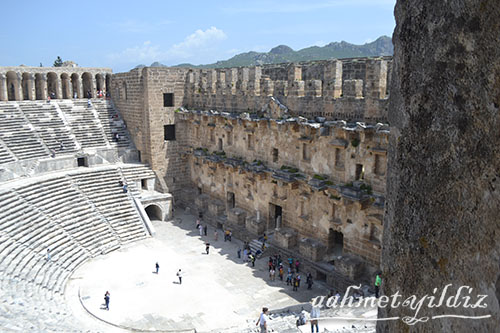
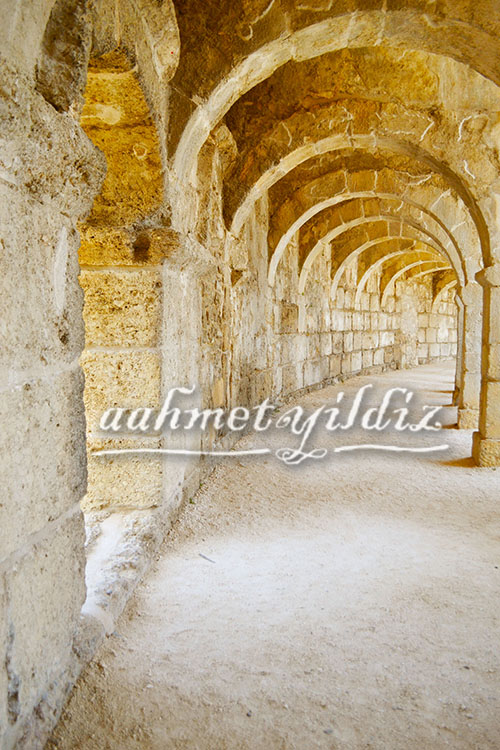
Historical Aspendos (Belkis) Bridge
It is over Köprüçay which is known as Eurymedon in ancient time. It is built as 07 eyed on the ruins of old Roman bridge legs by Anatolia Selcuk Emperor Alaaddin Keykubat. (1219 -1236) Restorated by Turkish 13-Region Highway road Administration between 1996 – 1998. Length m. Width 4,5 m – 5,7 m changeble.
Source: Info Board of Historical Aspendos (Belkis) Bridge
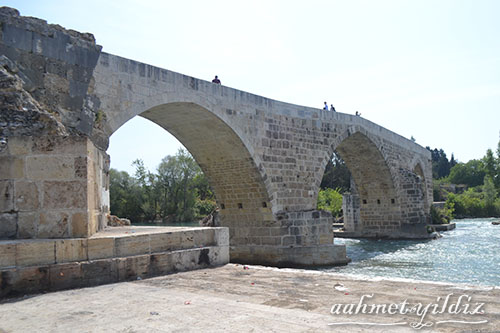


![Aspendos [EN]](https://www.aahmetyildiz.com/wp-content/uploads/gezi/turkiye/antalya/20160423_aspendos/main.jpg)
Geef een reactie